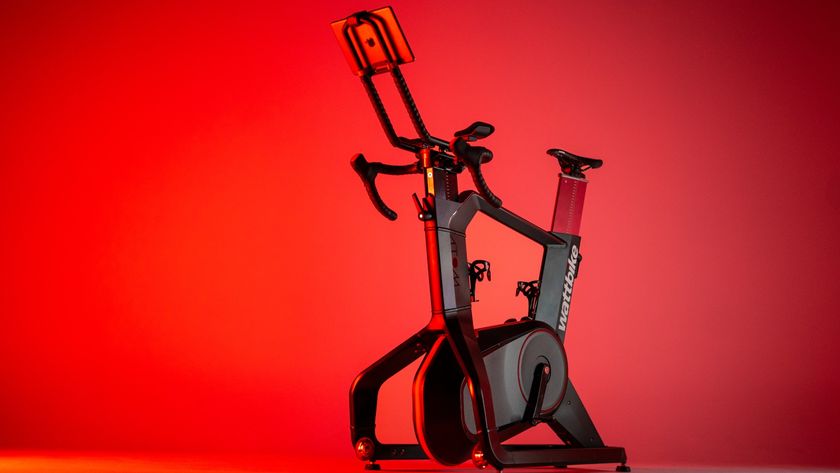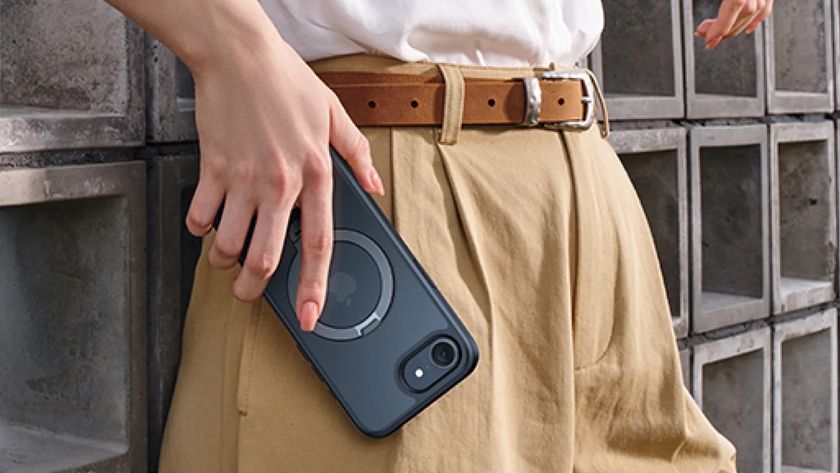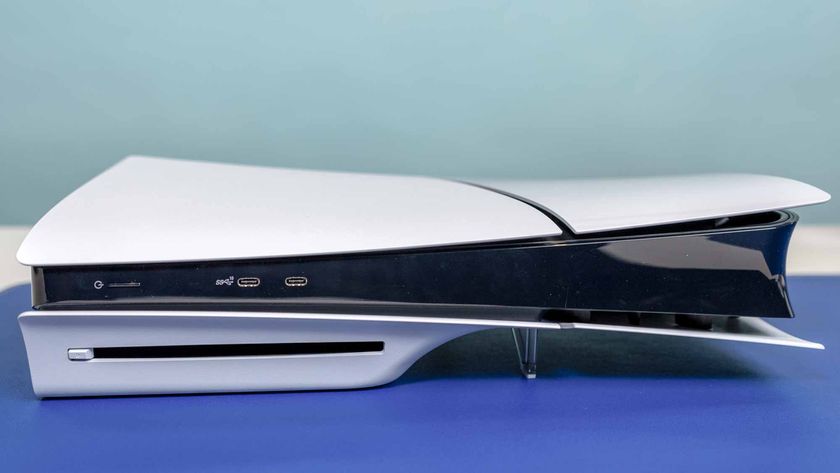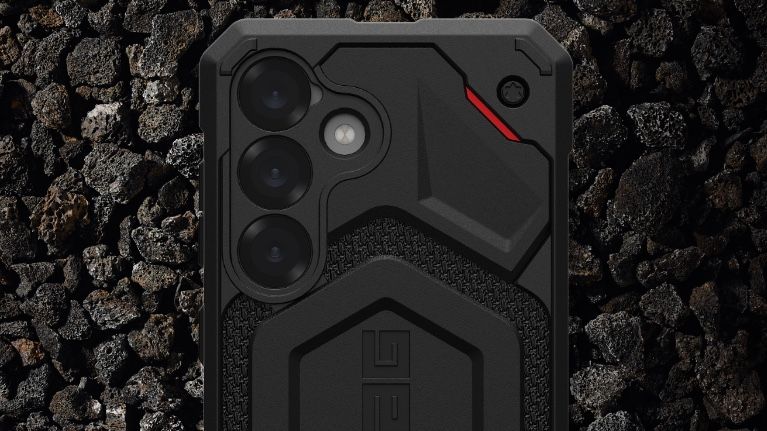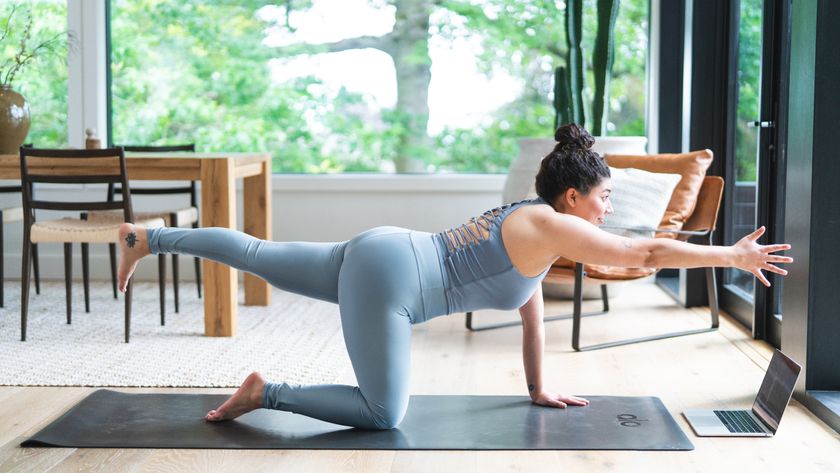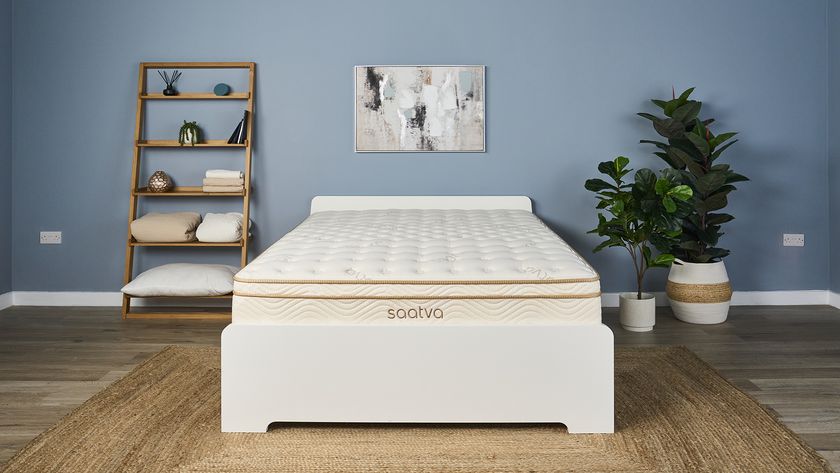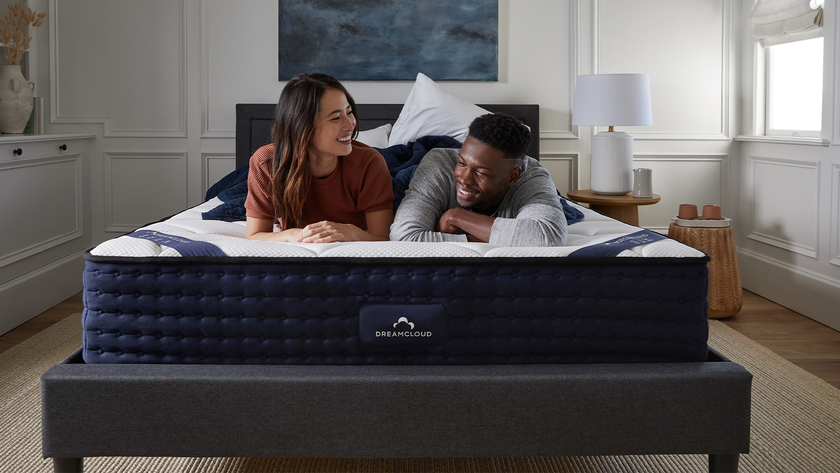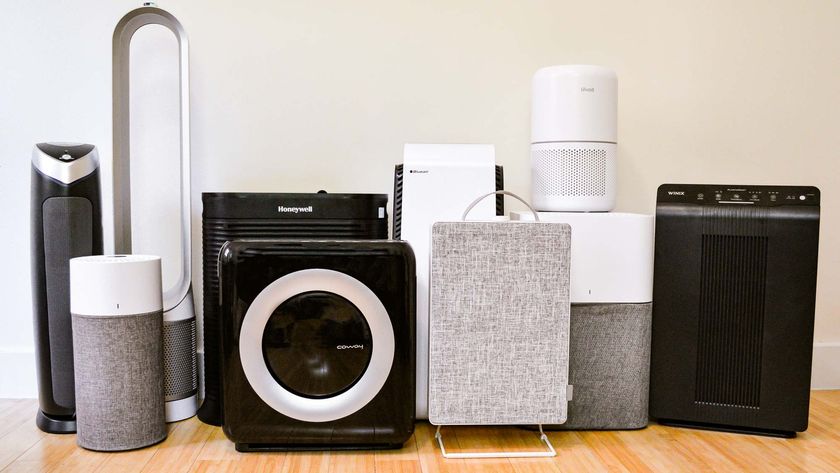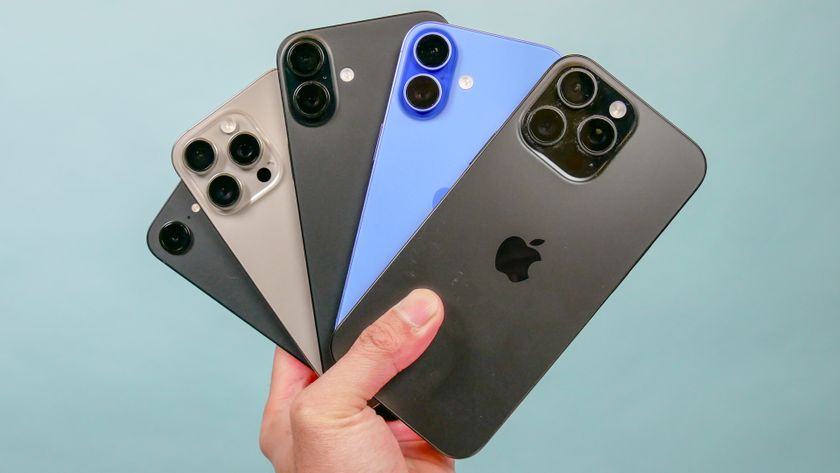9 best protein shakers 2025: tried and tested
The best protein shakers for nutrition and hydration.
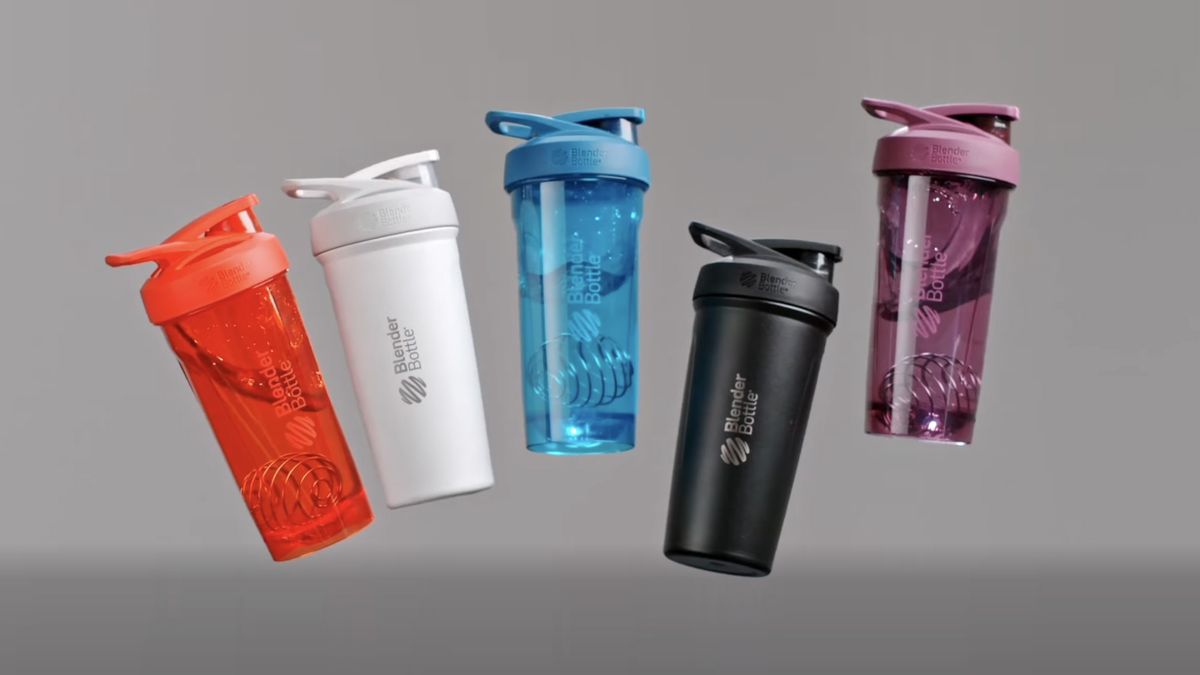
The best protein shakers are a must-buy, so we've tried and tested the best on the market to help you decide what to carry before, during and after your workouts. And we've done that much testing, we've got wrist aches from shaking up protein recipes.
Gone are the days when you'd throw your protein shake in any old container in the cupboard. Models now offer compartments for supplements, non-drip lids and insulation for hot and cold shakes. Perhaps you need a machine-washable model or one that prevents the dreaded chalky aftertaste.
Adequate protein intake is crucial for muscle tissue repair and provides the building blocks for muscle growth. Topping up your levels with a protein shake shouldn't be a faff. If you have your recipes locked down, it's time to find the best protein shaker to pair it with. Find out how to clean your blender properly and how much protein you need to build muscle, and read on to see the best protein shakers money can buy based on our testing.
Best protein shaker overall
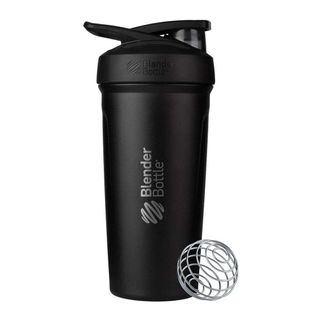
Best overall
+ High-quality steel construction
+ Vacuum-insulated design
+ Locking lid cap with push-button release
+ Multiple colors
- No extra features or accessories
This 24-ounce shaker is made from 316 surgical-grade stainless steel, which is rated to keep drinks cold for up to 24 hours. The leakproof design includes a foolproof locking mechanism on the lid to keep your liquid nutrition off the floor and in your gullet. The BlenderBottle Strada comes in five elegant color choices, too, so you’re sure to find one to match your personal style.
While the Strada is capable of holding up to 24 ounces of liquid, the interior markings only go to up to 20 ounces (or 590 milliliters), which acts as a visual reminder to not overfill your shaker when you add ice, protein mix, water or milk. The top screws on smoothly and cleanly, and just as advertised, the Strada really is leakproof once you lock the lid. I casually kicked it around my living room floor a few times to test just how leakproof it would be and while this didn’t result in any spillages, I did manage to stub my toe once or twice; this thing is built like a tank.
The double-walled insulation works well, too. I left some ice water inside the Strada overnight in a 70-degree room, and the ice water temperature rose from a chilly 35 degrees to a totally drinkable 59 degrees when I checked it the next day. (I used an infrared thermometer for this.) I dig the push-button lid as well.
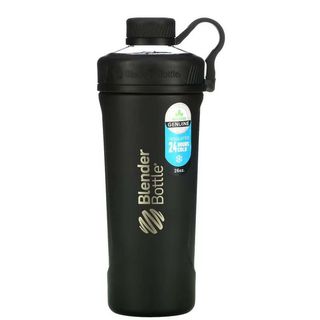
Best runner up
+ Affordable
+ Detachable carrying loop
+ Seven different colors
- Only measures up to 26 ounces on the side
By the time you've invested in the best gym bag, a decent set of resistance bands, and upgraded your fitness tracker, your fitness routine might be looking pretty expensive. Luckily, without spending a fortune, you can still get a decent protein shaker.
The Radian is another model from BlenderBottle that can hold up to 32 ounces, and the dishwasher-safe construction is made from stain- and odor-resistant Eastman Triton plastic.
I like how the liquid measurements for this shaker are clearly visible on the outside. (For many shakers, such measurements are on the inside.) Another standout feature for the Radian is its detachable carrying loop, which adds a little customization to your nutrition. There’s not much else to talk about here, but some of the best workout accessories are as basic as my workout music choices.
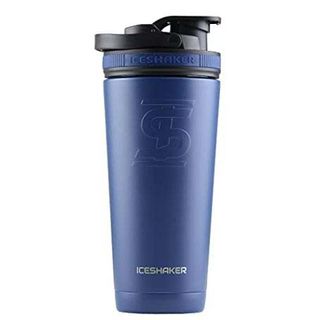
Best leakproof
+ Rock-solid build
+ Leakproof design
+ Twist-off agitator
+ Insulated
- Can't put in dishwasher
This double-walled, vacuum-insulated bottle doesn’t leak or sweat. The stainless steel design is odor-resistant and designed to keep your drinks ultra-cold for up to 30 hours. This protein shaker has received a lot of good press since its inception, and for good reason. After putting it through its paces, this is one of my top picks.
The Ice Shaker is easy to open and close, with the lid cap clicking firmly into place as you press it down, letting you know everything is secure. What sets the Ice Shaker apart from the others on this list is the removable agitator built into the inner lid, replacing the traditional stainless steel blender ball most protein shakers use.
When I used the Ice Shaker to mix up some simple protein shakes (whey protein powder, water and a few ice cubes), the agitator worked well to break up and dissolve the powder right away, while also keeping the ice cubes from banging against my teeth when I took a slug. To test its insulation, I left ice water inside overnight in a 70-degree room, and the water temperature rose from a super-chilled 35 degrees to 55 degrees when I checked in at the 30-hour mark.
It’s more expensive than the average protein shaker, but you won’t be disappointed by the Ice Shaker. The tapered design feels good, and the innovative agitator works well in practice.
Why you can trust Tom's Guide
Best protein shaker for convenience
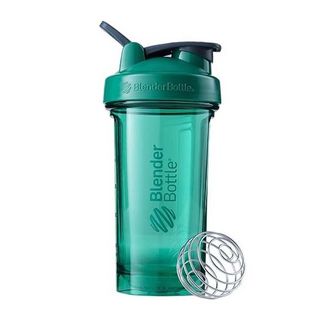
Best for convenience
+ Plenty of color choices
+ Nifty flip-up handle on the lip
+ Multiple sizes
- Just the basics
This last BlenderBottle is mostly identical to the Radian model above, but it comes in three different sizes (24, 28, and 32 ounces) and 13 attractive colors. It also has a rotating carrying handle on the lid, which is hard plastic as opposed to silicone.
Otherwise, you won’t find any bells or whistles on this protein shaker, but at this price, that’s fine. The cap snapped firmly in place after every sip, and the leakproof lid gave me enough confidence to toss it into my backbike during a brief bike ride. For just the basics and nothing more, this is the protein shaker you’re looking for.
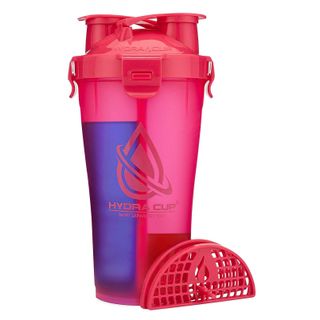
Best for carrying a shake and a snack
+ Super cheap
+ Leakproof cap
+ Two different compartments
+ Tons of different colors and styles
- Somewhat annoying to clean
- Small parts can be lost
This protein shaker is split in half (15 ounces on either side), allowing you to store two completely different liquids in two completely separate compartments. It’s a unique design that adds some extra versatility to your gym bag.
The Hydra Cup is one of my favorite protein shakers thanks to pure functionality. That split-compartment design is fantastic for towing around more than one liquid at once, saving time as you transition from pre- to post-workout supplements. The lid snaps down securely on all four sides to seal up the gaskets, ensuring that all liquids (or solids) stay where they should.
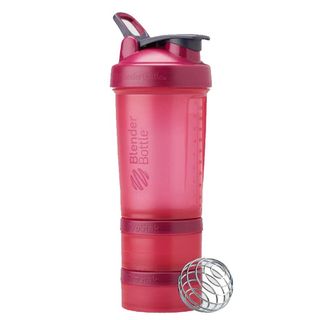
Best for organization
+ Excellent value
+ Two “stackable” trays
+ Multiple color options
- Feels somewhat flimsy
Available in seven snazzy colors — from Moss Green to Hot Pink — the ProStak is more than just a protein shaker. The 22-ounce bottle is paired with two interlocking storage jars; the jars can be attached to the bottom of the bottle, each other, or even inside the lid.
I love gear that comes with secret compartments, so the BlenderBottle ProStak is right up my alley. The plastic build feels a little flimsy, but for the price, you’re bound to get your money’s worth by the time anything breaks. I love the stackable storage jars which make putting together my workout supplements feel like I’m using an adult Lego set. I could see this being extra useful for busy parents, too, since you could use these little compartments to store surprise snacks for your kids (or yourself).
Best protein shaker for everyday function
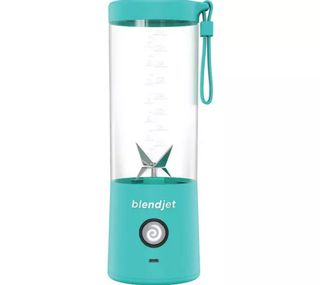
Best for on-the-go
+ Slim handheld design
+ Perfect for light blending
+ Tons of cool color choices
+ Surprisingly powerful
- Low liquid capacity
This battery-powered mini-blender is more powerful than you’d expect and small enough to toss into any gym bag. Designed for smoothies, protein shakes, frozen cocktails, meal replacements, salad dressings and more, the BlendJet is more than just a gym companion — it’s an all-around useful kitchen accessory that adds a little tech to your fitness hustle.
I’m not joking: this is my favorite kitchen gadget to date. The BlendJet’s slim one-button design is easy to use, and there’s even a carrying strap on the lid. The micro-USB port is waterproof, too. I loved using this thing to blend up post-workout protein shakes, mid-morning fruit smoothies, and end-of-day frozen margaritas. (I earned it, OK?) You won’t regret having this thing lying around.
It takes about an hour and a half to fully charge the BlendJet; on a full battery, you should get roughly 15 blends, according to the company. During my testing, I started to run out of juice after about 10 blends, but that miniature motor burns through more juice if you’re...well, using it to make really thick juice.
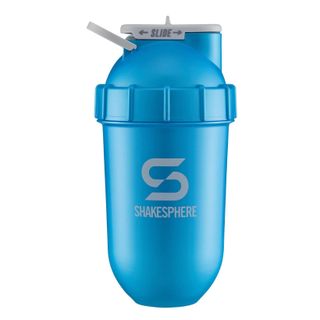
Best easy-to-clean
+ Rugged construction
+ No blending ball necessary
+ Easy to clean
- Sliding lid isn’t failsafe
- Not dishwasher safe
If you’re a fan of wordplay and also playing hard, the ShakeSphere is worth a look. This capsule-shaped shaker has a unique design that doesn’t even require a blender ball inside to mix up your powders and premixes. There are no corners inside, either, making the whole thing easier to clean.
I like the sliding cap on the lid, but you really do have to be vigilant that it’s fully closed before moving it around; the oval shape is easy to tip, and I accidentally spilled my water a few times as I tested it out. The adjustable finger loop on the cap is a nice touch, though. All in all, you won’t be disappointed with this protein shaker.
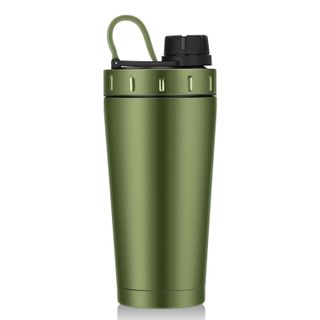
Best for hot liquids
+ Can handle hot and cold liquids
+ Two blender balls included
+ Liquid measurements on the inside
- Heavy, clunky
- Only three color choices
Most protein shakers aren’t meant to handle hot liquids, but the Homiguar Shaker Bottle can. Thanks to the durable 18/8 stainless steel insulation, this bad boy can keep cold drinks chilled for up to 20 hours, and warm drinks warm for up to 8. (In my testing, these claims hold up.) This shaker has a 20-ounce capacity, but there’s a measurement line inside that goes up to 18 ounces.
Of all the protein shakers on this list, the Homiguar Shaker Bottle felt the most solid as I Iugged it around; just make sure the cap is securely fastened before you go. The outer texture of the shaker is easy to hang on to, and there’s a handy silicone loop for easy carrying. This model also stands out by including two different blender balls (one plastic, the other stainless steel), which is useful for shaking up powders of varying consistencies; they both worked well, quickly dissolving my whey protein and BCAA powder mixes.
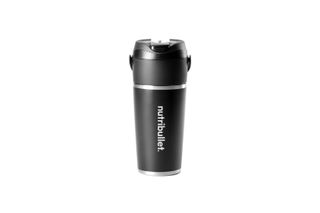
Best portable blender
+ Hot and cold liquids
+ On-the-go blending
+ 3-cell fully rechargeable battery
- Heavy
Nutribullet Flip is an insulated on-the-go blending cup that can keep your shake cold for up to 24 hours. It uses a 3-cell, fully rechargeable battery and is hailed as one of the most powerful portable blenders on the market. A unique blade design allows you to blend and sip on the move with minimal assembly required. We love how easy and effective it is, and we could whip up a shake in no time without much cleanup required.
It's worth noting that the blender cup is heavy and maybe a little cumbersome to carry around, but it's the perfect blend-and-bounce solution for those in a rush to the gym.
How to choose a good protein shaker
At the end of the day, a protein shaker is just a widemouthed water bottle with a stainless steel blender ball inside, right? But when choosing the best protein shaker, pay close attention to the lid. Our favorite shakers have locking mechanisms and other leakproof designs to prevent unwanted spills. Look for comfortable carrying handles on top that are easy to snag with the tips of your fingers.
If you’re going to tote your liquid nutrition around with you, why not do it with a little panache? Some of the best protein shakers come in a variety of snazzy colors (and/or motivational logos), so if you want a gym accessory to match your personal style, it’s OK to be a little picky. That being said, always favor function over fashion, folks. Nobody’s taking their protein shaker to a runway show.
Another thing to look out for is the size of the shaker. Most protein shakers hold between 16 and 36 ounces of liquid, leaving enough extra space inside to dissolve that workout mix or protein powder.
Lastly, think about what you want to carry and how cold, or warm, you want it to stay. Most protein shakers are made from lightweight plastic (often BPA-free), but some of the best protein shakers use stainless steel insulation to keep cold drinks colder, longer. You can leave such shakers out in the sun without worrying about a lukewarm milkshake after a few late-afternoon laps.
How we test the best protein shakers
In order to determine which protein shakers belonged on the top of this list, we evaluated them based on functionality, quality of build materials, and how each bottle felt while holding it. We also made sure to test out the seal for every lid; nobody likes a gym bag filled with lukewarm protein sludge. After filling each shaker up with water, we knocked them around on the floor a bit and checked for any leakage.
Lastly, since we live in a tech-centric age, we looked for any extra bells and whistles (ex, multiple liquid chambers, removable pill trays, detachable carrying loops) that were genuinely useful. At the end of the day, the best protein shakers sure won’t break the bank, but they should still be a good value overall.
To test any insulated protein shakers, which are designed to handle both hot and cold beverages, we filled them halfway to the top with ice water, screwed on the lids, and let the shakers sit for 10 minutes. Then we removed the lids and quickly recorded the inner temperature of each bottle via infrared thermometer. After sealing the shakers again and letting them stand for 24 hours in a 70-degree room, we recorded the inner temperature a second time. In short: the smaller the temperature flux, the more effective the insulation.
FAQs
What are the best protein powders to put in your shaker?
There are many types of protein powders on the market, all with different pros and cons. Most protein powders can be divided into dairy proteins, which include whey protein and casein protein, and vegan non-dairy, which includes pea protein, soy protein, rice protein and hemp protein. The type will often depend on your personal preference and your health goals. Whey protein, for example, can be absorbed faster than casein protein, which is why some bodybuilders opt to take casein protein before bed.
When is the best time to have a protein shake?
Not sure what to eat before a workout? Protein shakes can be consumed before or after workouts, but this is the best time to drink a protein shake, and it's not when you think.
In short, if you're using a protein shake as a meal or snack replacement as a way to lose weight, it's worth taking a protein shake at the time you'd normally eat the meal or snack you're replacing. If your goal is to build muscle, we recommend a protein supplement between 30 and 60 minutes after exercising to improve recovery and build muscle mass.
If you plan to consume a protein shake before exercise, it could help fuel workouts and aid protein synthesis. In this case, consume 60-90 minutes before exercise. Either way, taking protein and carbs after a long effort has been found to promote recovery and help muscles rebuild.
How much protein do you need to build muscle?
How much protein you need to build muscle depends on how active you are, your fitness goals, genetics, age, biological sex and how many calories you consume in a day. Of course, those trying to build muscle should consume more protein than those who aren't.
The current Recommended Dietary Allowance (RDA) is 0.8 grams of protein per kilogram of body weight (0.36 grams per pound) to avoid deficiency, and the U.S Department of Agriculture recommends 10% to 35% of daily calories come from protein (1 gram of protein is 4 calories).
The American College of Sports Medicine recommends 1.2 to 1.7 grams per kilo of body weight for strength athletes and around 1.2 to 1.4 grams for endurance athletes. You can check out a macro calculator online to help you decide.
What should I put in my protein shake?
There's no perfect recipe and it will depend on your tastes and fitness goals. For example, our in-house personal trainer packs in the protein serve if she's aiming for weight loss to keep sated or includes ingredients like oats and peanut butter if she's fueling workout efforts or replacing a meal with a shake.
The best protein shakes will have a high protein content (over 20g per serve) with healthy ingredients added and little to no additives or sugars. If you can't pronounce it, don't add it.
Check the ingredients if you choose a pre-made shake; home shakes are often better as you can prepare them yourself and control the ingredients you add. Try to keep the carb and sugar content low and avoid adding high amounts of fruit juices. We love Chris Hemsworth’s go-to protein shake, or you can try this one:
Banana and nut pro-go:
1 scoop of vanilla protein powder (your choice)
½ banana (frozen)
1 cup dairy-free milk or water
1 teaspoon peanut butter
1 teaspoon cocoa powder (optional)
Icecubes
Blend together and enjoy!
Are stainless shakers better than plastic?
In general, yes. Stainless steel is a safe material and doesn't contain some of the nasties found in plastic, plus they tend to be more durable. Many of the best stainless steel protein shakers also keep hot drinks hot and cold drinks cold, which is ideal if you're taking yours on the road or hiking.
Stainless steel shakers are also easy to clean and pick up less staining than plastic, plus they look good, too. However, if you're looking for a cheap and lightweight budget shaker to throw in your gym bag, plastic might suit you better.
Is it better to shake or blend protein shakes?
Our in-house trainer always recommends blending your shakes, unless you're going basic with the ingredients and just whipping up protein powder and milk or water.
If you want to use ice cubes or ingredients like oats, nut butter, or fruit, blending is the best way to whip up a shake and reach a smooth consistency. You might find your shake lumpy or chalky, or the ingredients might separate, without blending. However, if you don't have one of the best blenders handy, shaking it up is still a perfectly doable option and is more convenient for on-the-go recipes.
Sign up to get the BEST of Tom's Guide direct to your inbox.
Get instant access to breaking news, the hottest reviews, great deals and helpful tips.

Jane McGuire is Tom's Guide's Fitness editor, which means she looks after everything fitness related - from running gear to yoga mats. An avid runner, Jane has tested and reviewed fitness products for the past five years, so knows what to look for when finding a good running watch or a pair of shorts with pockets big enough for your smartphone. When she's not pounding the pavements, you'll find Jane striding round the Surrey Hills, taking far too many photos of her puppy.
- Sam HopesSenior Fitness Writer, Fitness and Mobility Coach


